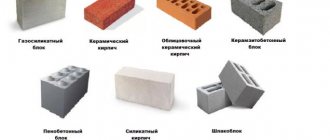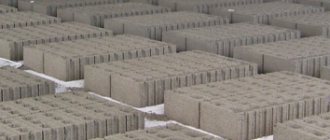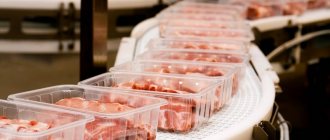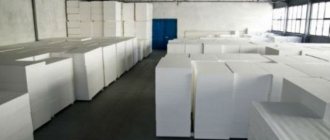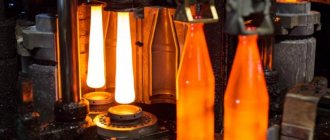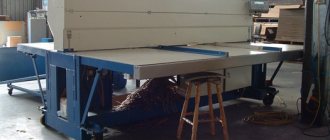Self-employed persons are a relatively new category in taxation. They are those who work for themselves without registering or LLC. For a long time, the self-employed were outside the legal framework, because most of them did not pay taxes.
A year ago, the Federal Tax Service began an experiment to legalize the self-employed, which turned out to be very successful. And in 2020, nineteen more constituent entities of the Russian Federation joined the four pilot regions. It is quite possible that by the middle of the year the new tax regime will be in effect throughout the country.
The attractiveness of the tax for the self-employed is due to several reasons:
- low tax rate – from 4% to 6% of income received;
- simple registration through the Federal Tax Service website;
- voluntary payment of insurance pension contributions;
- lack of reporting and the need to use a cash register.
But if we talk about restrictions, they are also significant. Firstly, the annual income limit is set at 2.4 million rubles. Secondly, self-employed people cannot hire workers. Thirdly, you can only engage in certain types of activities.
Free tax consultation
What kind of business can self-employed people run?
The official name of the regime for the self-employed is the professional income tax. That is, those for whom providing services or performing work is a kind of profession have the right to pay NAP. But unlike hired workers, the self-employed do not have employers; they find customers for their services themselves.
Here are some examples of the types of activities of the self-employed that the Federal Tax Service provides on its website.
Is it possible for a self-employed person to engage in trade? Judging by these examples, only the sale of own-produced products is allowed. But perhaps allowing self-employed people to sell goods is written into law? To do this, you need to study the primary sources.
The tax on professional income has not yet been included in the Tax Code of the Russian Federation, because it is an experimental regime. Regulatory provisions for NPD are established by Law No. 422-FZ of November 27, 2018.
Own production in the supermarket
Anna Bakalo, project management manager at TD Marketing, RetailStudio.org
For some this is an additional way to earn money, for others it is an objective necessity. One retailer thus controls the quality of products on the shelves, while others attract customers and their loyalty. Today, the question of organizing your own production in a grocery store is more than interesting - like everything that helps make money in one way or another.
Where to AIM
The scale, choice of its type, as well as the price category of the equipment can be different - depending, again, on the goal pursued by the retailer, on the capacities, resources and courage at its disposal to take on something new. On the other hand, following the example of the West, chains are gradually beginning to view it as one of the signs of civilized retail. “In-house production is an integral part of the assortment of any modern supermarket. Therefore, the decision to organize our own production did not stand alone. The presence of cooking facilities, own baking and a confectionery shop must be considered as an attribute of effective functioning. As well as the availability of dairy, meat, alcoholic beverages, etc.,” says Evgeniya Shipotko, process engineer of the production department of the Big Spoon chain.
What, exactly, is the attractiveness of locating a production workshop directly at a retail outlet? Firstly, based on changes in the consumer mentality, “easy-cooking products” are more than popular today - the demand for semi-finished products has already been formed a priori, not to mention ready-made food. Secondly, if we take, for example, the bakery department, it’s a matter of visuality and the peculiar effect of aroma marketing, which creates the aroma of freshly baked bread in tandem with a crispy crust, which is born virtually before the eyes of the buyer. This gives the product additional value. The third aspect is the possibility of creating a competitive advantage for a retail outlet that offers, first of all, exclusivity - a special product, difficult to reproduce, difficult to copy by competitors, i.e. has, for example, a unique recipe or production method and which can only be purchased here. And finally, another, no less important point is flexibility in the approach to the product range at a certain moment. For example, on weekends, in the summer, you can always buy various types of fresh kebab in chain stores; In winter, freshly cooked cutlets, azu, steaks, as well as a wide variety of salads are always on sale. There is also an opportunity to communicate directly with the buyer and adjust short-term marketing plans taking into account his reaction.
“Our own production allows us to always offer customers fresh products and quickly respond to their tastes and requirements. This is also an opportunity to differentiate yourself from your competitors. After all, for example, candies or cookies from large confectionery factories are the same in all markets, but each supermarket’s own baked goods are unique, special and always the freshest,” says Alexander Pryadukhin, director of in-house production at Quiza Trade LLC.
The promotion of this type of product can also be facilitated by a change in assortment, as well as various marketing campaigns. This could be, for example, a competition for the best recipe for a branded salad, in which all employees of the network who wish to show their skills anonymously participate. Or a promotion like “Cuisines of the World” (it is carried out by “Velika Kyshenya”) - this way, store customers can try dishes from different cuisines, and not just traditional Ukrainian.
In Russia, where many people turned to this earlier, among the most successful are the practices of “Perekrestok” (the range of salads and ready-made dishes on the network today amounts to 600 items, semi-finished products – 350, baked goods – 80), “Mosmart” (more than 500 items in one hypermarket, in different categories: bakery - 99%, fish - 25%, meat - 64%, hot table - 78.6%), "ABC of Taste" (by 2006, the share of self-produced products in the chain's turnover was 20%, and specialized workshops now operate in 9 of the chain’s 12 stores). Today in Russia, our own production has even reached the discounter format, which we still have isolated examples of. In Kaliningrad (convenience stores “Kvartal”, discounters “Deshevo”, Cash & Carry stores and supermarkets “Victoria”), for example, production facilities provide the chain stores with salads, delicacies, pickles, smoked products, bread and confectionery products.
As a result, own production looks like a rather attractive investment opportunity. “In-house products often have additional value for the buyer, so they do not act as substitutes for the main set of goods. Thus, additional income for the network is provided by increasing each category. For example, in a standard store, sales of standard assortment bread products are about 2%; after installing your own bakery, due to the expansion of the assortment, sales more than double - up to 4-5%. In other words, previously consumers could not always find what they wanted to buy in the bread department. Now they have the opportunity to buy various types of bread in one store, thereby making the shopping process more comfortable for themselves,” says Valery Levenstam, Vice President for Commerce of the Fozzy Group holding.
According to Nikolai Burkanov, head of the technological equipment department (we participated in the design and equipment of such projects of our own production of super- and hypermarkets as “Velika Kyshenya”, “Sympatik”, “Tam-Tam”, “Prostor” (Kiev), “Materik” (Dnepropetrovsk), properly organized production provides about 20% of the supermarket’s turnover, and its profitability can reach 70%.
“Our own production departments provide about 6% of the profit from the total income of the network,” says Evgenia Shipotko. — Marketing loyalty indicators are difficult to assess, since “Big Spoon” did not introduce its own production after its appearance on the market. We started working with him right away. Therefore, loyalty to the Big Spoon brand already includes this factor. You can do the opposite: imagine that without our own production, the loyalty and number of our customers will decrease. Yes, this will definitely happen. It is very difficult to give an exact figure, since loyalty is formed not so much on the basis of a simple set of factors, but on the basis of their emotional mixing and intersection.”
However, not all formats benefit from in-house production to the same extent: in some cases, it can create more problems than benefits. First of all, this applies to discounters offering a narrow range of products and goods in a limited area. “Convenience stores” have the potential to organize production, but it can be difficult for them to realize it due to various technical limitations. For stores near home, it is economically justifiable to create production in places with a throughput of 2,000 people per day, provided with a power of 140 - 150 kilowatts. In the absence of the required area for organizing production, it is possible to build schemes for working with products manufactured in the territories of other workshops. In small formats (from 300 sq.m.), it is recommended to organize meat and salad shops (production is organized on the basis of one store, its products are distributed to 2-3 points).
Investments in workshops are relatively small and almost always pay off. According to generalized data, the share of products produced in the store in the supermarket assortment is up to 8%, in turnover – up to 12%, in profit – 18-50%.
VID production
Having decided “for” an additional type of activity, you must first of all decide on the scale of production (that is, the amount of money you are willing to invest), its varieties and assortment within each department. Much here depends on the prices of raw materials and the activities of the closest competitors in this segment.
“Expanding the range and services through our own facilities in the Fozzy Group retail chains is based on an analysis of the existing demand for certain products, as well as studying the market potential,” continues Valery Levenstam. — The decision to organize our own production to meet the needs and expectations of the consumer is made if existing manufacturers cannot offer us a product that meets the wishes of the consumer, or its quality is not high enough. For example, the bread market has traditionally had a very small range of products baked by city bakeries. Often our customers do not want to be satisfied with such a limited selection of bakery products. Therefore, we were faced with a choice - either to purchase products from small workshops that are equipped with new equipment, or to open our own bakeries.”
The main types of in-house production are: cooking (gastronomy), meat, fish departments and bakeries, confectionery departments. In Ukraine today, this format is presented in most super- and hyper-markets. First of all, online. Thus, in the networks of the Fozzy Group corporation, in-house production is represented in several areas: cleaning, cutting, packaging of meat and fish before reaching the counter is carried out in the meat and fish departments of stores; own culinary shops of the “Silpo” and “Fora” chains provide cold and hot home-quality dishes, and also fulfill customer orders; confectionery and bakery products baked in our own bakeries. The Velyka Kyshenya supermarkets have meat, fish, culinary, and confectionery production departments, as well as their own bakery. The culinary department offers about 200 freshly prepared salads and dishes from meat, fish, poultry, seafood, and vegetables; the assortment of the confectionery department includes about 240 different cakes, pastries and other sweet products; supermarkets' own mini-bakeries produce several types of fresh bread with various healthy and tasty additives - sunflower, pumpkin and flax seeds, sesame seeds, poppy seeds, with additives based on wheat, buckwheat and corn flour, various types of baked goods - stuffed pies, puff pastries, croissants, buns and many other baked goods. Employees of the culinary or confectionery department also prepare any dish for a festive banquet to order.
The level of production is determined by the following criteria: product range, quality of cutting (baking or cooking) and labeling, packaging, temperature conditions for storing finished products, expiration dates and knowledge of supermarket staff about these products.
Practice shows that each network invents its own way to save on production costs by investing in innovative approaches. For example, Mosmart uses bulk storage of flour in silos, which is uncharacteristic for mini-bakeries, which significantly reduces the cost of its products. In meat production, the technology of deboning half-carcasses in a vertical position on an overhead track has been introduced, which reduces the labor intensity of deboning workers. Raw materials for store production are received daily, and inventories in warehouses do not exceed daily volumes. This allows you to significantly reduce the costs associated with their storage. The use of combi steamers (heating equipment) of the latest models costing more than $2000 - 3000 can reduce losses in the production of culinary products by 17 - 22%.
Theoretically, retailers could reduce costs by outsourcing production. However, most large manufacturers are not flexible in their assortment policy, are not ready to be responsible for logistics, and are generally not very willing to work with relatively small orders. And the effect of the product is simply lost right before our eyes. On the other hand, cooperation with manufacturers of ready-made culinary products can be a very good alternative in the case of, for example, entering new regions. As regional branches develop, it is better to refuse the services of third-party manufacturers in order to be able to better control the quality of culinary products that are very demanding in terms of production, transportation and storage conditions.
The specifics of the work of a fairly profitable meat department primarily require efficiency in work. The ideal option is if the workshop is located directly behind the wall of the meat department. This allows you to control the required volume of products produced in the context of assortment items, not to “overstock” and at the same time prevent the absence of the most popular items. Unfortunately, this option is not available in all stores.
Salad production can be the most profitable, due to the fact that the costs are very low (the share in turnover from 40% at launch after 3 months decreases to 8% and then to 5%, in contrast to meat production, where costs are usually 7-10%). Salad production does not require large areas: it is enough to have 2 cutting tables, a household stove and a vegetable cutter + at least 1 counter; The optimal area is about 20 square meters. m.; The growth dynamics of product sales is very high. This type of production itself is based on a peculiar effect: the markup on products poured from a large jar into a gastronorm container increases significantly, because When making a purchase, it is no longer the cost factor that plays a role, but the impulse - I really want to try it. At the same time, if the price is indicated for 100 grams, and not for 1 kg, it is practically not perceived. A good move here is to switch to organizing salad bars, i.e. counters with open access to products, because it is common knowledge that the transition to self-service is the easiest way to increase turnover.
The main thing in baking production is strict adherence to technology, excellent raw materials and high-quality equipment. Bakery products (pies, cakes, pastries, various small items) are good because often the buyer, without planning a purchase in advance, makes it in response to the sight, and, most importantly, the smell of freshly baked products. Therefore, in those stores where there are bakery shops, you can open mini-cafeterias.
Decided - implemented
Ideally, creating your own culinary, confectionery or meat shop begins with a project. In order to determine what the real needs of the store's target audience are, marketing research is first conducted, the future assortment, top and exclusive positions are developed, it is determined whether there will be a full or incomplete cycle of production, etc. Next, an assessment is made of the required productivity of the enterprise, planned sales volumes and the frequency of receipt of raw materials in the workshops. And only after this information has been collected, it is necessary to involve the equipment supplier in the work.
In general, when organizing its own production, a retailer must adhere to its marketing strategy, says Valery Levenstam. Before starting your own production, you need to research which product is currently needed. In other words, it is important to determine exactly what product the buyer expects. However, despite the technology inherent in network business, very often marketing analysis of consumer preferences among domestic retailers comes down to the fact that a production technologist develops an assortment based on personal experience. After all, it is within his competence to create a “zest” that the buyer can find only in the stores of this chain.
The next step is the correct selection of equipment for production. In addition, it is important to make the right decision about the scale of production: will it be a mini-workshop in a store or an independent in-house production that can serve several stores.
“All experts agree on one thing: it is easier to reduce costs and maintain peace of mind when creating your own production if you contact an equipment supplier at the stage of building a supermarket,” Nikolai Burkanov, head of the technological equipment department, shares his observations. — After all, firstly, organizing production workshops requires sufficient space, the presence of certain communications and appropriate electrical power. Secondly, when designing a culinary, meat, confectionery or bakery shop, it is important to comply with fire and sanitary standards, the name of which is legion. And thirdly, to ensure the necessary production capacity, it is worth creating it ergonomically, so that it is convenient for employees to work in each workshop, and the coordination of workshops is simple and convenient.”
Separately, we need to talk about the nuances of selecting equipment. The main thing here is a sense of proportion: cheap things are not allowed, and expensive things reduce profitability. If we talk about the choice between expensive and cheap, experts are inclined to the first option - they say, in the store’s own production, this actually plays a decisive role. It is generally accepted that this category usually includes foreign equipment - Italian and German. “When choosing equipment, you should not focus only on the cost of the equipment. Often, cheap equipment does not meet the retailer's expectations. It usually breaks quickly. And this is downtime in production, which leads to financial losses,” notes Elena Shemet, director of MBR LLC, a supplier of equipment for catering establishments, culinary shops, and bakeries.
The task of assistance at all stages of organizing production today is solved by multidisciplinary trading companies that include design and sales departments, design bureaus, economists, and technical specialists. The most competent of them offer an overview of the current situation on the market for manufacturers of certain products, the profitability of certain types of production, and concepts for organizing production.
The standard set of equipment depends not only on the type, but also on the volume of production.
So, according to the data, for a mini-bakery with an assortment of up to 15 items with a full cycle of production of bread and confectionery products you will need: a flour sifter; dough mixing machine; dough divider; forming machine for croissants and baguettes; proofing cabinet; hearth or rotary oven; pastry tables and carts. At the same time, for a bakery with an assortment of over 15 items with a productivity of up to 250 kilograms of confectionery and bakery products per hour, the typical set of necessary equipment will no longer include 7, but 16 items. To operate a culinary shop, you will need heating, refrigeration, mechanical and neutral equipment.
The cost of organizing your own production in terms of equipment varies in each individual case. It all depends on what type of production it will be. This could be a full production cycle in each supermarket chain, which involves dirt, waste, personnel costs, allocation of space, etc. The second of the most common options is to organize a full-cycle production (kitchen factory) on the basis of only one of the chain’s stores, and distribute high-quality semi-finished products to all other chain facilities. However, according to the calculations of the New Project, the organization of a factory-kitchen will be profitable in the territory of one region, starting with the seventh supermarket, with 63% production utilization.
In addition, the cost of equipment also depends on the assortment, on the productivity of workshops, on technology, etc. On average, we can say that the share of investments in equipment for own production is about 30% of the total equipment of the store. For a supermarket with an area of about 1500 sq. m. the required investment in full-cycle culinary production equipment will range from 30,000 to 55,000 euros. The cost of equipping a full-cycle bakery with a capacity of 2000 kg/day will be within 100,000 euros, with an occupied area of 100 sq. m. The cost of equipping a bakery operating on semi-finished products ranges from 5,000 to 15,000 euros.
After choosing equipment, it is necessary to select the right personnel who will work in your own production. In most cases, in-house production in retail chains is complex both from the point of view of managing the mechanisms and from the point of view of the technology for obtaining the final product. Therefore, special attention should be paid to employee training.
You can't go wrong with organizing
What mistakes should be avoided by those wishing to organize their own production?
Having interviewed practitioners who have tried everything from their own experience, Trading Business received the following tips and recommendations for retailers who already have their own production departments in their stores and those who have just decided to do this:
- Compliance with a single standard for all supermarkets of the Network. “The main difficulty, in my opinion, is ensuring the stable quality of our own products,” shares Valery Levenstam, Vice President for Commerce of the Fozzy Group holding company. — The reasons for unstable quality can be associated with both deviations from production technology and the human factor. In any case, the quality of manufactured products in different chain stores in different regions cannot be allowed to differ, since a general negative impression is formed about all chain stores.”
- Rigid calculation and control of production volume. Unlike an industrial enterprise where production volumes are inversely proportional to costs, here there is a threat of leftovers. Small volumes of production, for example, in confectionery shops, allow not only control over the process, but also the creation of almost exclusive products. “The introduction of new dishes and products must be very consistent while constantly monitoring customer reactions. In addition, the only way to reduce costs is to produce exactly the amount of product that will be consumed exactly on time. Everything must be absolutely fresh,” notes Evgenia Shipotko, production engineer of the production department of the Big Spoon chain. A representative of Quiza-Trade also speaks about the small volume: “We prepare small portions of dishes so that there is always fresh produce on the shelves.”
- You can't use cheap equipment - none of the experts recommend it. But there are exceptions everywhere. So, in order for production to remain profitable not for a year or two, but for decades, it is necessary to “invest” in equipment properly. That is why large serious supermarkets, for the most part, purchase high-quality Italian equipment for the production of bakery products.
In addition to these points, experts advise paying no less attention to the following: setting up an accounting system, having a program that allows you to keep quantitative records; (often the quality of raw materials is very different from what is described in the collections - the expected output does not correspond to the actual one) and the organization of a system for protecting against theft of personnel: for us, who had no previous experience in production.
Expert opinions
Valery Levenstam, Vice President for Commerce, Fozzy Group holding
Having its own bakery is definitely a positive for the store. Even the very aroma of fresh bread in the sales area creates a special mood and feeling of comfort. But, most importantly, having our own bakeries, we can offer customers of our retail chains original high-quality bakery products. Thus, our own production gives us the opportunity to satisfy the diverse needs of our customers and offer them original products. But at the same time, this also represents a risk group for the network: the buyer, having tried the product once, decides whether he will choose it in the future. And if he feels that the product in one of the stores does not have sufficient taste and does not meet his expectations, he may form a general negative impression of all the stores in the chain.
Director for own production of Kviza Trade LLC Alexander Pryadukhin
The profitability of in-house production departments is indicated, first of all, by high consumer demand. They not only make it possible to always offer customers fresh products, but also make it possible to quickly respond to their tastes and requirements. This is also a great way to differentiate yourself from your competitors. After all, for example, candies or cookies from large confectionery factories are the same in all markets, but each supermarket has its own baked goods, special and always the freshest. And if the buyer knows that at any time he can buy fresh bread in the store, something tasty for dinner or breakfast, or - in one place - everything he needs for going to barbecue - such a supermarket becomes his favorite. Nikolay Burkanov, head of technological equipment
Very soon, optimally organized in-house production will become a serious competitive advantage and an effective weapon of struggle in a competitive market. After all, this is not only an opportunity to diversify the product range, but also an additional reason to contact the client (holding weeks of various kitchens, surveying clients about their requirements and wishes for the range). According to experts, at this stage a group of buyers has already formed in society, ready to pay for ready-made meals and semi-finished products.
Evgenia Shipotko, process engineer of the production department of the Big Spoon chain
Marketing loyalty indicators are difficult to assess, since Big Spoon did not introduce its own production after its appearance on the market. We started working with him right away. Therefore, loyalty to the Big Spoon brand already includes this factor. You can do the opposite: imagine that without our own production, the loyalty and number of our customers will decrease. Yes, this will definitely happen. It is very difficult to give an exact figure, since loyalty is formed not so much on the basis of a simple set of factors, but on the basis of their emotional mixing and intersection.
Trade trade discord
There is no direct answer to the question of whether a self-employed person can engage in retail trade in Law No. 422-FZ. But there are restrictions given in Article 4. In accordance with these provisions, the payer of the professional income tax does not have the right to trade:
- excisable goods and goods subject to mandatory labeling;
- goods intended for resale;
- minerals.
As a result, only goods of own production remain, as the Federal Tax Service showed in its examples. But self-employed people cannot buy a finished product and sell it at their own markup.
Product forms
The company's products can take two forms:
- Product – parts, finished products, semi-finished products and other types of product, the sizes and volumes of which can be expressed in natural measurement units.
- Services – work aimed at improving the useful qualities of a product (for example, painting) or restoring lost properties (repair). Industrial services are associated with increasing the consumer value of products created earlier: grinding, installation, adjustment work, etc.
The intangible form of products has been gaining particular popularity in recent years. Depending on the nature of the work performed, market and non-market services are distinguished.
Market services include:
- settlement products of banks and other financial institutions that collect, transfer and distribute monetary resources;
- non-banking services - wholesale and retail trade, repairs, communications, rental, rental, laundry and dry cleaning services, education, catering, hairdressing, legal advice, etc.
Non-market services include costs that are covered by funds from the state budget or voluntary contributions (services of government agencies, public organizations, etc.).
What is in-house production?
Now let's figure out what is a product of our own production. Law No. 422-FZ does not provide this definition and does not make any reference to another normative act.
From practice we can conclude that a product of own production is a product that is produced, as they say, from scratch. For example, a dress is sewn, a cake is baked, furniture is made.
And if you buy a workpiece and partially process it, will it be a product of your own production? For example, paint finished parts for a wooden toy, assemble them and package them as an original product?
In this case, the question arises - what should be the share of processing in order for the product to be recognized as manufactured by the NTD payer, and not purchased for resale? Surprisingly, we could only find the answer in a document dated 1993, and even then, with great reservations.
Decree of the Government of the Russian Federation dated July 23, 1993 No. 715 establishes the procedure for determining products of own production. True, we are talking about goods intended for export. In accordance with the Decree, the product must be entirely manufactured at one enterprise. But an enterprise is a complex property complex; it is hardly possible to talk about it in the case of the self-employed.
If we talk about processing, then in order for a product to be recognized as its own, the share of added value must be at least 30% of the full price. Let us repeat that we are talking only about goods for export, so applying this approach to the self-employed is not entirely correct. Rather, it is simply a conditional guideline.
As for judicial practice, certain conclusions can be drawn from the Resolution of the Presidium of the Supreme Arbitration Court of the Russian Federation dated October 14, 2008 No. 6693/08. The claim was filed by the tax inspectorate against an entrepreneur who worked for UTII. In this mode, on the contrary, you cannot sell products of your own production.
The court recognized that the individual entrepreneur used UTII legally, because in his case there was no single production cycle for sewing bed linen. It follows from this that self-produced products are only those that are completely manufactured by the self-employed from raw materials or materials.
What about agricultural products grown on your own plot? Can she be subject to professional income tax? Here the situation is more clear. If the products are produced on a personal subsidiary plot, then upon its sale taxes are not levied at all on the basis of Article 217 (13) of the Tax Code of the Russian Federation. And you don’t need to register as self-employed when selling such products.
Thus, there is no clarity yet on the issue of defining home-made products. We can only wait for official clarification from the Federal Tax Service. In addition, each tax payer can receive a written response from the tax office, describing their situation.
What are products
Products are the result of an enterprise’s activities, represented by a set of material products and services ready for sale.
The product manufactured by the enterprise is an important indicator. Thus, product output characterizes the efficiency of the enterprise and labor productivity. Also, based on product volume, conclusions can be drawn about production capacity and equipment level. The information obtained allows us to identify problems that arise at different stages of production, assess potential and reserves.
Thus, products are the result of the firm's work and can be expressed in different forms.
Sales channels
If questions arise with the definition of home-made goods, then there are none with distribution channels. At least for now, neither Law No. 422-FZ nor other regulations establish restrictions.
Theoretically, self-employed people can sell their products in any way they want: in the form of peddling/delivery trade, on a trading island, via the Internet. In practice, the most popular way is online sales. This could be groups on social networks, advertisements on boards, or an online store on a separate domain.
As for a real offline store, this is hardly possible. Still, the products of the self-employed are piece goods, often made to order. It is difficult to produce large volumes on your own, because workers, even salespeople, cannot be hired. In addition, without registering as an individual entrepreneur or LLC, it will be difficult to rent retail space, so it is easier to hand over your goods for sale to already operating stores.
Another important nuance: when planning the production cycle of its goods, the NPD payer can involve performers under a civil law agreement. After all, the ban is established only on hiring workers under an employment contract.
However, again, there are no regulations regulating such relations yet. And it is impossible to predict yet how the Federal Tax Service will evaluate the production of its own goods if each stage in it is entrusted to different performers.
Assortment, production
Before bringing your idea to life, you need to decide on the product range. The project may turn out to be unprofitable - to determine the level of popularity of the product, various marketing analyzes are carried out.
The assortment determines the level of equipment purchases, costs and calculations of future sales form the investments necessary to start.
Healthy probiotics are still popular
Natural and drinking yoghurts will gain a turnover of $27.7 billion by 2020. Experts note that a fairly new creative segment has emerged, which is also developing more than dynamically: frozen yoghurts. Sales of this product are increasing by 20% annually. The consumer needs a healthy diet, and increasingly he refuses excess sugar in products. Therefore, yoghurts are purchased as a healthy natural snack option. Stevia (a sweetener) and yoghurts with unusual vegetable flavors are also gradually gaining their market share.
New products - gluten-free products accounted for about 18% of all innovations of the past year that were launched on US shelves. Lutein-free products can most often be found in the niche production of bakery products, snacks and cereals.
Those surveyed note that compared to the previous period, gluten-free products have become much tastier, and some are even willing to overpay in order to continue to have the opportunity to purchase a healthy product.
At the same time, food products are bought not only by those people who suffer from intolerance to gluten as one of the types of complex proteins, but by those who care about their figure and follow the nutritional culture.
conclusions
The professional income tax is an experimental regime for which there is no law enforcement practice yet. Therefore, we can only say unequivocally that self-employed people have the right to sell only goods that they have completely made with their own hands.
All other options, including processing (reworking) goods or involving performers under a civil contract at various stages of production, are doubtful. In such cases, you must contact the Federal Tax Service for a written explanation.
Features of product pricing
After producing a product, the company must calculate the price at which it will sell the product. Price is the monetary equivalent of the cost of a product. It includes all types of production costs, taxes and payments to the budget, as well as the amount of net income that the company expects to receive.
Product prices may change as production conditions change. Thus, an increase in product volumes leads to a decrease in replacement costs per unit of production. And cost reduction affects the cost of the product. Well, if an enterprise purchased new equipment and improved the technological process, this will most likely lead to an increase in the price of the products produced.
"Designer" vegetables and meat products
In the case of meat products, we can talk about both quite serious production and simple cutting (post-processing) for serving.
In the first case, we suggest paying attention to the designer sausages and meat rolls coated through with food dyes, invented by the German meat brand Feldhues: in cross-section, such sausages are funny and original, and the rolls are mysterious. At the same time, the cost of such beautiful products is almost equal to ordinary ones - but, for obvious reasons, they can be sold much more expensive than simple meat products (and will still find mass demand).
In addition, it makes sense for farmers (especially greenhouse growers) to use a set of specially ordered transparent forms to grow cucumbers that give a star or heart shape in cross-section, cubic tomatoes (and any other fruits, including watermelons).
In the second case, with the help of special molds and knives, “designer” cutting of vegetables, fruits, and meat products is carried out - with the formation of entire compositions from them, similar to figured cakes - after which all this is delivered to the customer at special banquet prices.

